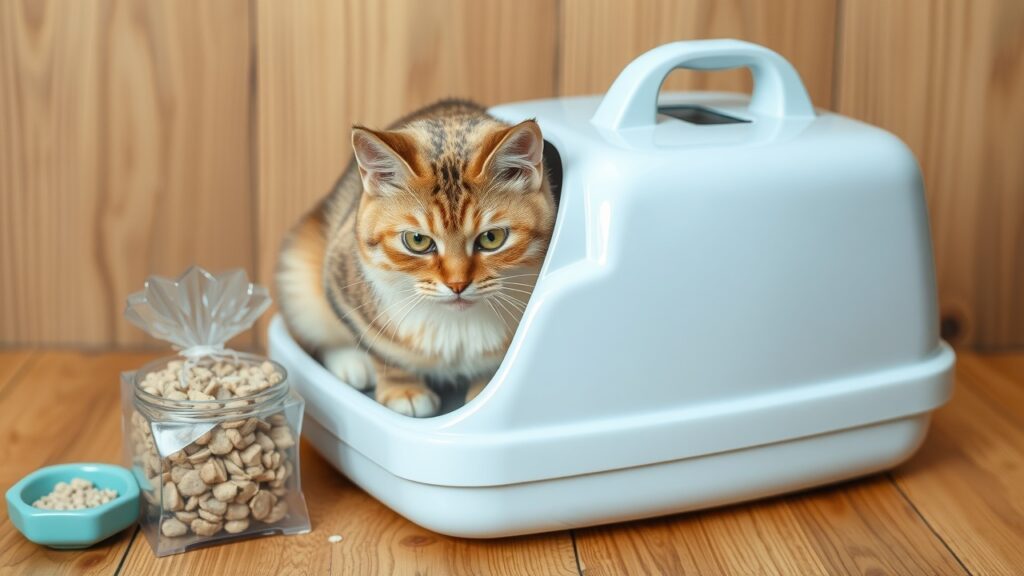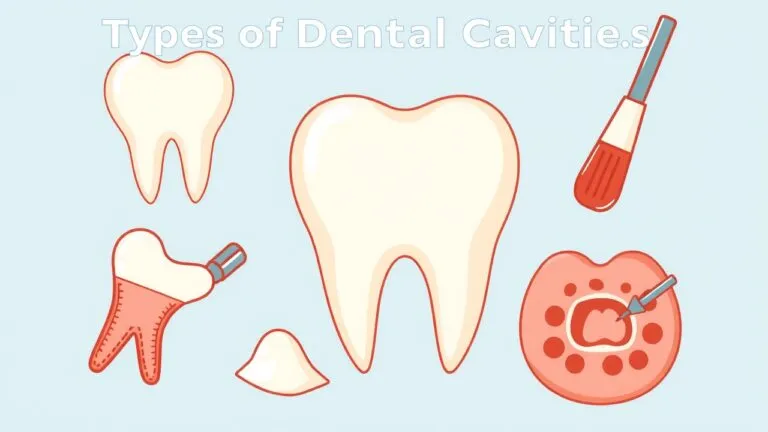This guide explores various types of cat litter (clay, silica, natural), comparing clumping/non-clumping, scented/unscented options to help you choose the best one for your cat and home.
What Is Cat Litter and Why Does It Matter?

Cat litter is a special material put in a cat litter box. Its main job is to soak up pee and hide smells. This helps keep things clean for your cat and your home. Picking the right cat litter is really important. It affects your cat’s health, how comfy they feel, and how tidy your house stays.
Choosing the best cat litter also helps control bad smells in your home. There are many types of litters, so if you’re a new owner or thinking of changing brands, it’s good to know what’s out there.
Common Types of Cat Litter
Here are some common types you might find in stores:
| Type | Description |
|---|---|
| Clumping Clay | This kind forms solid clumps when wet. It makes it easy to scoop waste. It’s good for smells. |
| Non-Clumping Clay | This type absorbs moisture but doesn’t form clumps. It’s usually cheaper but needs more frequent changes. |
| Crystal Litter | Made from tiny silica gel crystals that soak up moisture and smells with little dust. |
| Wood Pellets | These are made from compressed sawdust. They are eco-friendly and soak up moisture well. |
| Paper-Based | Made from recycled paper, this is soft for cats’ paws and good for kittens or sensitive cats. |
Knowing these options helps you choose the right one for your cat’s needs, like if you have multiple cats or need extra odor control.
Common Problems with Choosing Cat Litter
Many new cat owners face issues when picking the right litter:
- Dust Production: Some litters make a lot of dust when used or cleaned out, which can bother people with allergies.
- Odor Control Issues: Not all litters work well at hiding smells, so it’s important to pick carefully.
- Tracking Messes: Some litters stick to your cat’s paws more than others, leading to messes all over the house.
By knowing about these common problems with different kinds of kitty litter, you can make better choices for both you and your furry friend while keeping your home clean.
Types of Cat Litter Explained
Clay Cat Litter: Clumping vs Non-Clumping Options
Clay cat litter is super popular. There are two main kinds: clumping and non-clumping clay litter. Knowing the differences can help you pick the best one for your kitty.
Subtypes
Differences between clumping clay litter and non-clumping clay litter.
Clumping cat litter forms solid clumps when it gets wet. This makes it easy to scoop out the yucky stuff. Many cat owners like this because it makes cleaning the box simple. The clumps stay together well, so there’s less mess, and it helps with odor control by keeping waste covered.
Non-clumping clay litter absorbs moisture but doesn’t form solid lumps. Instead, it spreads out in the box as liquid is soaked up. You might need to change it more often since waste can mix with clean litter. Some people like this option because it’s cheaper or they prefer its feel.
Features & Benefits
Absorbency levels, texture details (fine vs coarse), odor control properties.
Both types of clay litter have their own good features:
- Absorbency: Clumping litters soak up moisture really fast thanks to their fine granules. Non-clumping ones also absorb well but might need to be replaced sooner.
- Texture: Clumping litters are usually finer and feel softer for cats. Some cats, though, might like the coarser feel of certain non-clumping options.
- Odor Control: Many brands add things like fragrances or baking soda to help with smells in both types.
Key Questions Answered About Clay Litters
Choosing the right cat litter can be tricky, especially for new pet owners or if you’re switching brands.
- Which is better—clumping or non-clump versions? Any allergy concerns worth knowing?
- Clumping litters are often liked because they are easier to use and manage smells well. But they may create dust that could bother allergies in sensitive pets or people. If allergies are a problem, check out hypoallergenic options that produce less dust while still working great.
Learning about these differences helps you decide what kind of clay cat litter suits your home and keeps your furry friend comfy!
Silica Gel Cat Litter: Superior Absorbency and Odor Control
Silica gel cat litter, also called crystal cat litter, is made from tiny silica crystals. These crystals are super absorbent. They hold moisture and odors well. That’s why many cat owners like using them. The crystals let air flow through, which helps keep smells down in the litter box.
Pros and Cons
Here are some good and not-so-good points about silica gel cat litter:
Pros:
- Great odor control: It absorbs smells quickly.
- Lightweight: Easier to carry when changing or cleaning.
Cons:
- Can be pricey compared to other litters.
- If a cat eats some, it might cause issues, though it’s mostly safe in small amounts.
Best Use Cases
Silica gel cat litter is perfect for:
- Multi-cat households, where smell control is really important.
- Homes that need to avoid bad odors since it lasts longer than many other options.
Natural Cat Litters: Eco-Friendly Alternatives
Natural cat litters are great for eco-friendly pet owners. They offer biodegradable options that work well without harming the planet.
Wheat Litter
Wheat cat litter comes from processed wheat byproducts like straw. This litter clumps when wet, making it easy to clean up. It’s biodegradable too!
Here are the pros and cons:
Pros:
- Low dust levels: Good for cats and people.
Cons:
- Might cost more than regular clay litters.
Corn Litter
Corn cat litter is made from whole-kernel corn. It clumps when it gets wet and does a good job at controlling odors.
Here are the good and bad points:
Pros:
- Great absorbency and odor control.
Cons:
- Can attract pests if not stored right.
Paper Litter
Paper cat litter uses recycled paper products. It comes in pellets or shredded forms that work well for absorbing waste.
Here’s what to know:
Pros:
- Highly absorbent.
Cons:
- May need frequent changes to avoid smells.
Going for natural alternatives helps your cat’s health and is better for the planet! There are many eco-friendly litters today. They’re great for pet owners who care about sustainability. It’s also important to think about any allergies or sensitivities your kitty might have to certain materials.
When picking between silica gel and natural litters, think about what works best for you and your pet. Look at your budget, how much odor control you need, and the environmental impact of each choice. Also, pay attention to how your pets react to different types of litter!
Other Cat Litter Types
Wood Pellet Litter
Wood pellet litter comes from compressed sawdust or wood shavings. When it gets wet, it absorbs moisture and breaks down into sawdust. It’s a natural choice for pet owners wanting eco-friendly options.
Pros:
- Made from natural materials.
- Low dust levels keep the air cleaner.
- Good at controlling odors.
Cons:
- Needs more frequent changes than clumping litters.
- Some cats may not like the texture.
Recycled Newspaper Litter
Recycled newspaper litter is made from processed paper products. It absorbs moisture well and is gentle on your cat’s paws, making it good for sensitive pets.
Pros:
- Eco-friendly since it’s made from recycled stuff.
- Produces very little dust.
- Often flushable, which makes cleaning easier.
Cons:
- Not as good at controlling odors compared to clay-based litters.
- Might need changing more often due to lower absorption.
Tofu Litter
Tofu litter is made from crushed soybeans. It’s a unique, environmentally friendly option that’s safe for pets and offers great performance in clumping and odor control.
Pros:
- Biodegradable and compostable, which helps the environment.
- Great clumping ability makes cleaning easy.
- Low dust helps with air quality.
Cons:
- Can be pricier than traditional litters like clay or wood pellets.
Choosing the right cat litter type depends on what you and your cat prefer. Each has its own benefits!
Comparison
Choosing the right cat litter can be a bit tricky. There are many types to pick from, and each one has its own features.
Key Features to Compare
When picking the best cat litter for your furry friend, think about these key features:
- Absorbency: Choose litter that absorbs moisture well.
- Best Litters for Kittens and Senior Cats: Kittens like soft textures, while older cats may need low-dust or hypoallergenic options.
- Clumping Strength: Strong clumping makes it easier to clean up messes.
- Odor Control: Good odor control helps keep your home smelling nice.
- Eco-Friendly Options: Look for biodegradable choices made from materials like corn or recycled paper.
- Weight: Lightweight litters are easier to handle but might not always work as well.
Cost Analysis
Cat litter prices can change a lot depending on the type and brand. You might pay anywhere from $10 to $30 for a bag. For homes with many cats, consider buying larger bags or in bulk to save money. Monthly delivery subscriptions can also help you keep your supply stocked without running out.
Dust Levels and Health Concerns
Dust in cat litter can be bad for both people and cats. If anyone has allergies or breathing issues, look for low-dust alternatives. Hypoallergenic options can help reduce dust exposure, making it safer for sensitive cats.
Clumping Ability and Ease of Cleaning
Clumping ability is super important when it comes to keeping the litter box clean. Scoopable litters let you take out waste easily without messing up the clean litter underneath. Non-scoopable types make cleaning harder because you often have to change the whole box more often.
Factors to Consider When Choosing Cat Litter
Choosing the right cat litter is super important for your cat’s health and the smell of your home. There are some things you need to think about when picking cat litter that works best for you and your furry friend.
Cat’s Health and Sensitivities
Think about your cat’s health. If your cat has allergies or breathing problems, the litter can matter a lot. Some litters create dust that can make these issues worse. Look for hypoallergenic or dust-free litters. If you see your cat sneezing or coughing after using a certain litter, it might be time to find a better one.
Budget
The price of cat litter can really vary depending on what type you buy. Check out the cost per bag and how long it lasts based on how many cats you have at home. Monthly deliveries of litter can save you some cash too, and you’ll never run low.
Household Size and Number of Cats
In a house with lots of cats, you need strong litter that can handle odors well and is easy to clean up every day. Look for brands made for multiple cats because they often clump better and soak up smells more effectively than regular kinds.
Environmental Concerns
There are eco-friendly litters made from recycled stuff like paper or corn. These biodegradable options break down over time, which is better for the environment than traditional clay litters that just sit in landfills forever.
Odor Control Needs
Managing odors is super important when choosing kitty litter. Some brands have special formulas that help trap bad smells without using harsh chemicals or strong scents that could bother both you and your cat.
Clumping Preferences
You’ll also need to choose between clumping and non-clumping litter. Clumping types form solid pieces when they get wet, making cleanup simpler but needing more frequent changes. Non-clumping litters soak up liquid but don’t form hard lumps.
Switching Litter Brands
If you want to change your cat’s litter, do it slowly! Mix the old litter with the new kind over a few days so your kitty can adjust without getting stressed out.
By thinking about these things, you’ll find the best cat litter that fits both you and your pet’s needs!
Best Practices for Cat Litter Use
Keeping your cat litter box clean is super important for your cat’s health and to keep your home comfortable. Here are some best practices to help you with litter box maintenance.
Scooping Frequency
To keep the litter box clean, scoop out waste every day. This helps control smells and keeps the area nice for your cat. If you have more than one cat, try scooping more than once a day. Doing this will keep things tidy and help your kitty develop good bathroom habits.
Complete Litter Box Changes
Besides daily scooping, you should do a complete change of the cat litter at least every two weeks or sooner if it looks dirty. To change the litter, first remove all the old litter. Wash the litter box with mild soap and water, then add fresh litter. This stops germs from building up and making bad smells.
Proper Disposal (flushing vs. trash)
When it’s time to get rid of used cat litter, follow the rules based on what kind you have. Many clay litters can’t be flushed down toilets because they can cause plumbing problems. However, some brands offer flushable options made from biodegradable materials that break down easily in water. Always read labels to make sure you’re throwing it away safely.
Litter Box Placement and Maintenance
Where you put the kitty litter tray matters a lot. Place it in a quiet spot away from food and water bowls so they feel safe using it. If you have multiple cats, it’s a good idea to have one more box than you think you’ll need—this way, they won’t fight over who gets to use it!
By following these best practices for maintaining cleanliness in the cat litter box, you create a healthier home for both you and your furry friend while keeping odors to a minimum.
FAQs About Types of Cat Litter
What are the main types of cat litter?
The main types of cat litter include clumping clay, non-clumping clay, crystal litter, wood pellets, and paper-based litter. Each type has unique features.
How do I choose the best cat litter for multiple cats?
For multiple cats, choose clumping litters for easier cleaning and better odor control. Brands designed for multi-cat households work well.
Are there eco-friendly cat litter options?
Yes, eco-friendly options include natural litters made from materials like corn, wheat, and recycled paper. These choices help reduce environmental impact.
How often should I change the litter in the box?
Change the litter completely every two weeks or as needed. Scoop daily to keep it fresh and clean for your cat.
What should I consider if my cat has allergies?
If your cat has allergies, look for hypoallergenic or low-dust litters. Natural options may be gentler on sensitive paws.
Additional Insights on Cat Litter
- Benefits of Clumping vs Non-Clumping: Clumping litters are easy to scoop and maintain. Non-clumping ones absorb moisture but may need frequent changes.
- Choosing the Right Cat Litter: Consider your cat’s health, budget, and any odor control needs when selecting a litter type.
- Cat Litter Tracking Solutions: Use mats around the litter box to catch excess litter. This keeps your floors cleaner.
- Litter Box Placement: Position the box in a quiet area away from food and water bowls. This helps your cat feel secure using it.
- Cat Litter Safety: Always ensure that any litter you use is safe for your pet. Avoid any products that could pose health risks.
- Homemade Cat Litter Ideas: You can make DIY cat litter using shredded newspaper or sawdust. These alternatives can be cost-effective and eco-friendly.
- Types of Cat Litter Boxes: Explore options like covered boxes or self-cleaning models to suit your lifestyle and your cat’s preferences.
- Lightweight vs Heavy-Duty Cat Litter: Lightweight litters are easier to handle but may not clump as well as heavy-duty options. Choose based on what works for you.
- Dealing with Odors: Look for odor-eliminating formulas that help maintain a fresh-smelling environment around the litter box.
- Best Practices for Cat Litter Maintenance: Regularly scoop waste and change out old litter to prevent odors and keep your cat comfortable.
Related Topics
- Types of clay cat litter
- Types of natural cat litter
- Types of cat litter boxes (implied)
- Types of litter box maintenance (implied)
- Types of cat litter brands (implied)
- Types of homemade cat litter (implied)



Types of Cat Litter: A Complete Guide